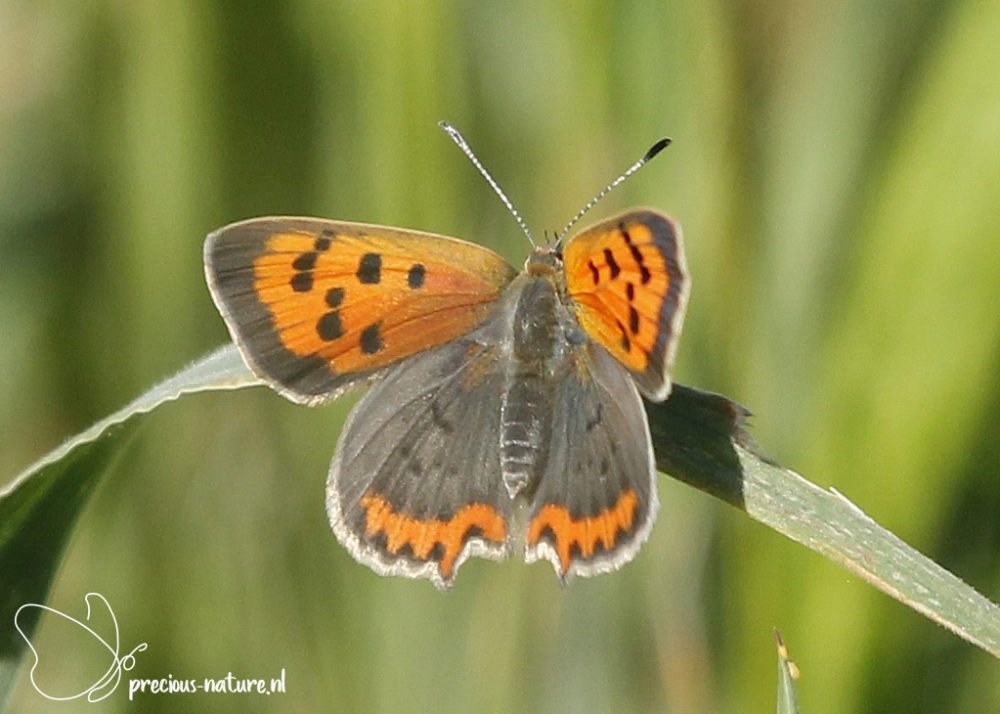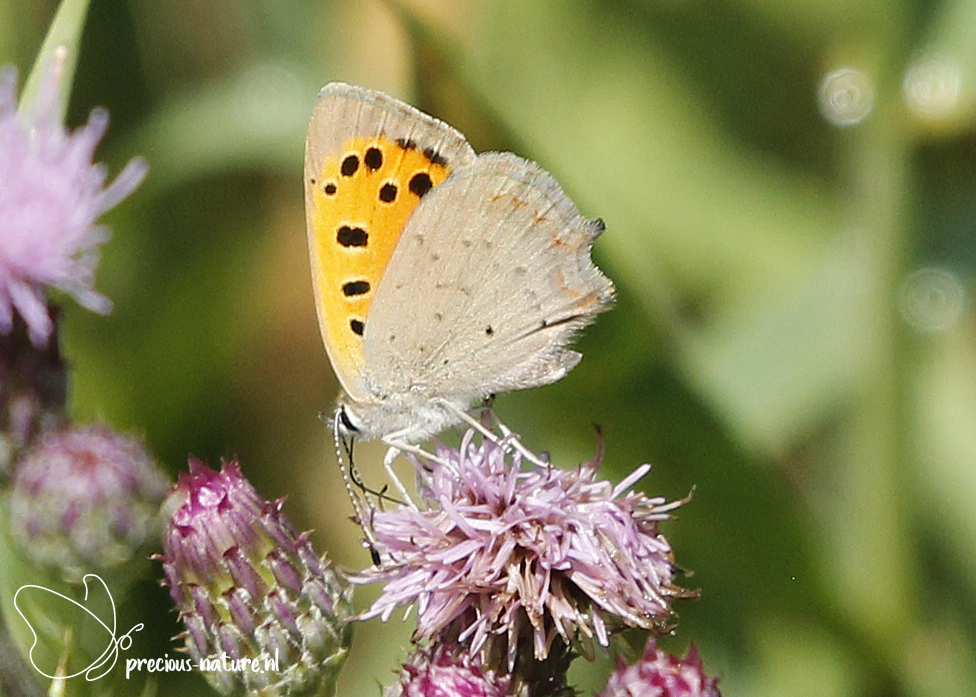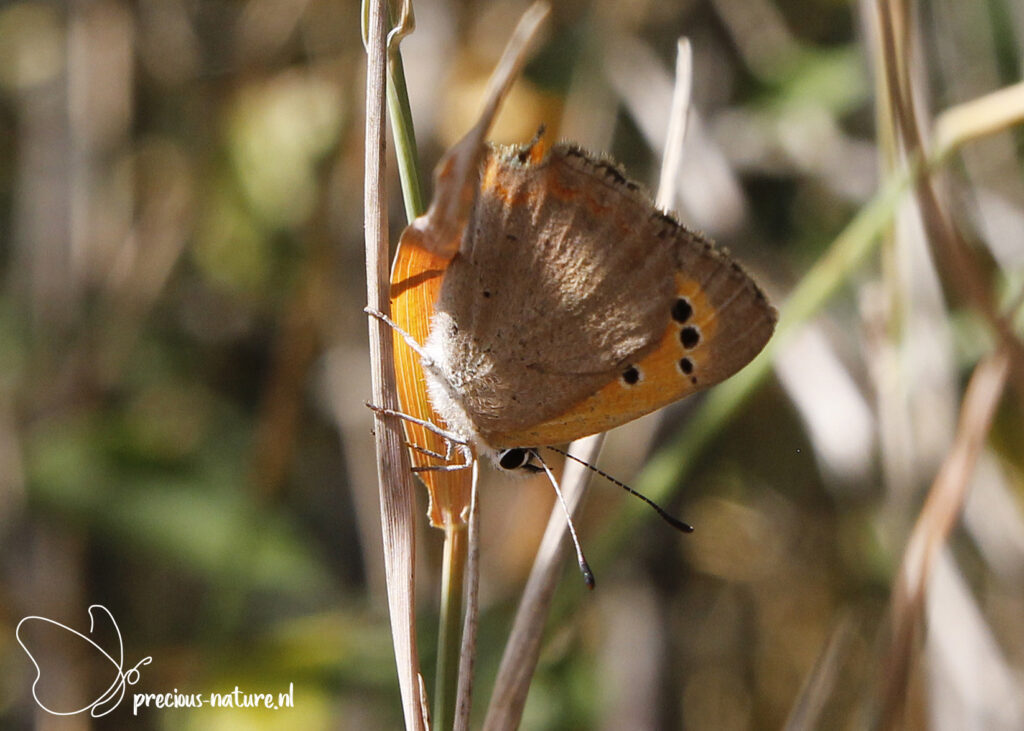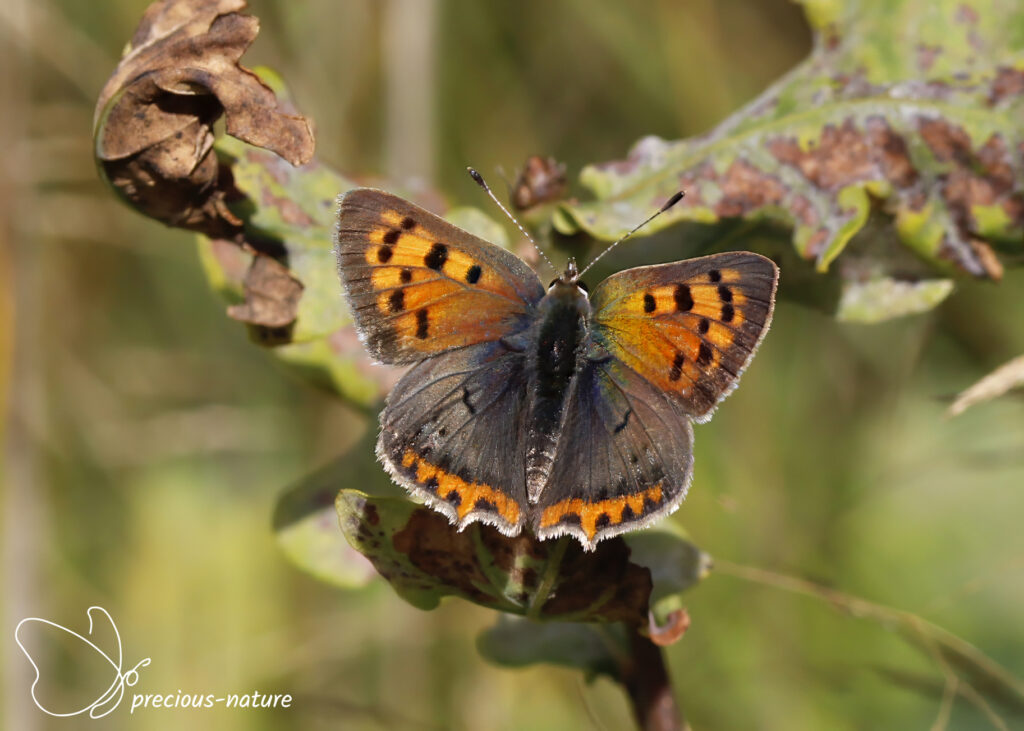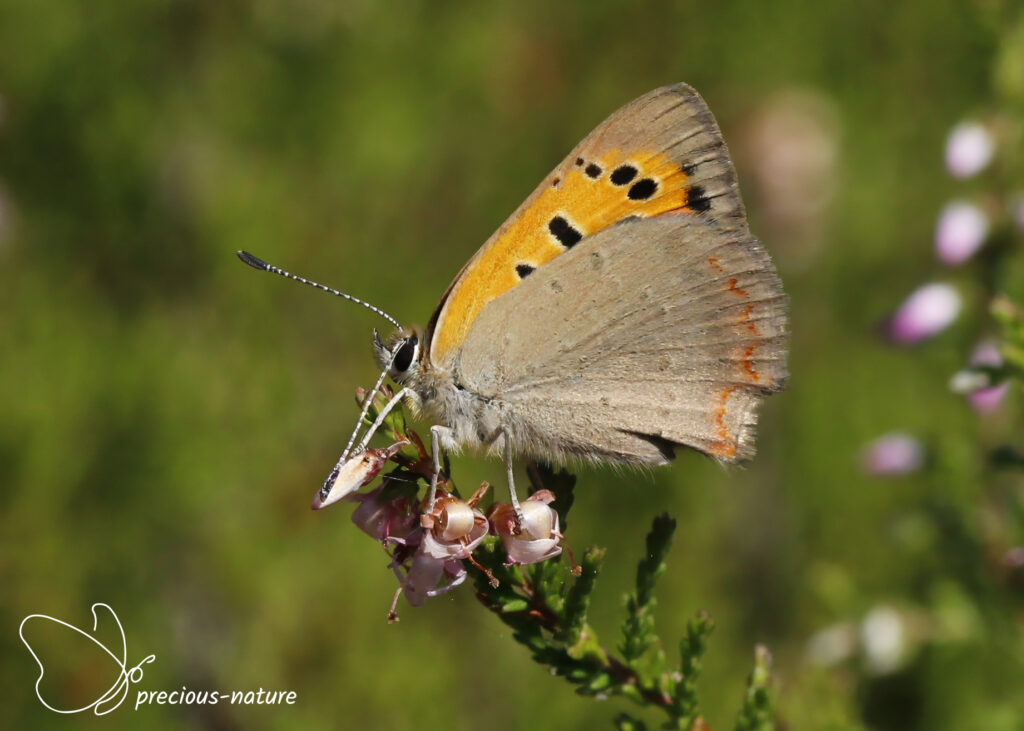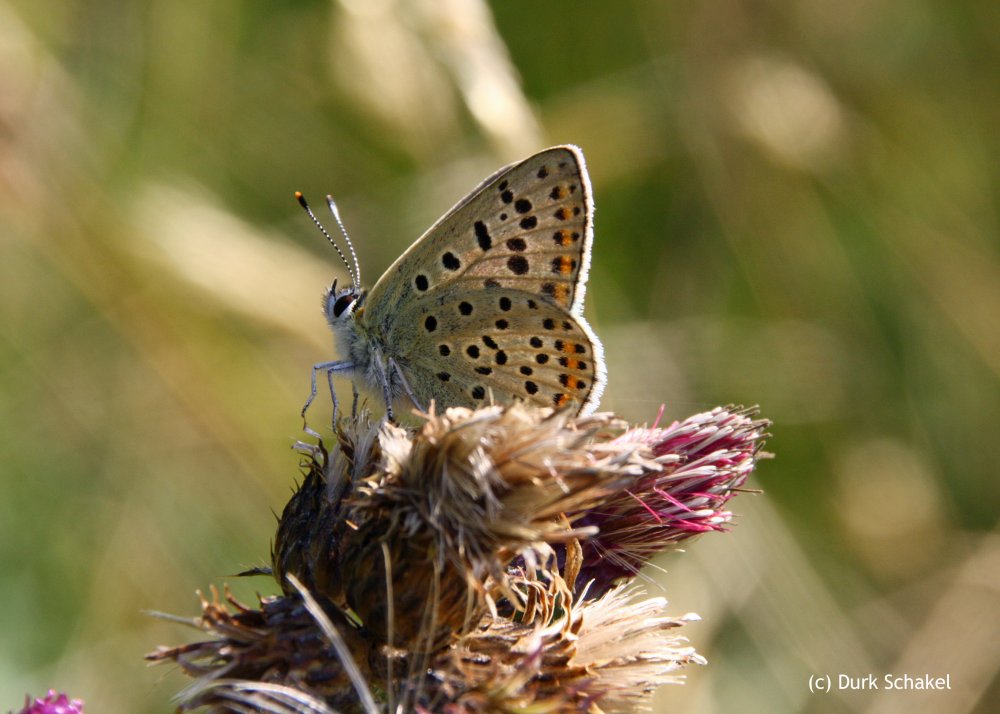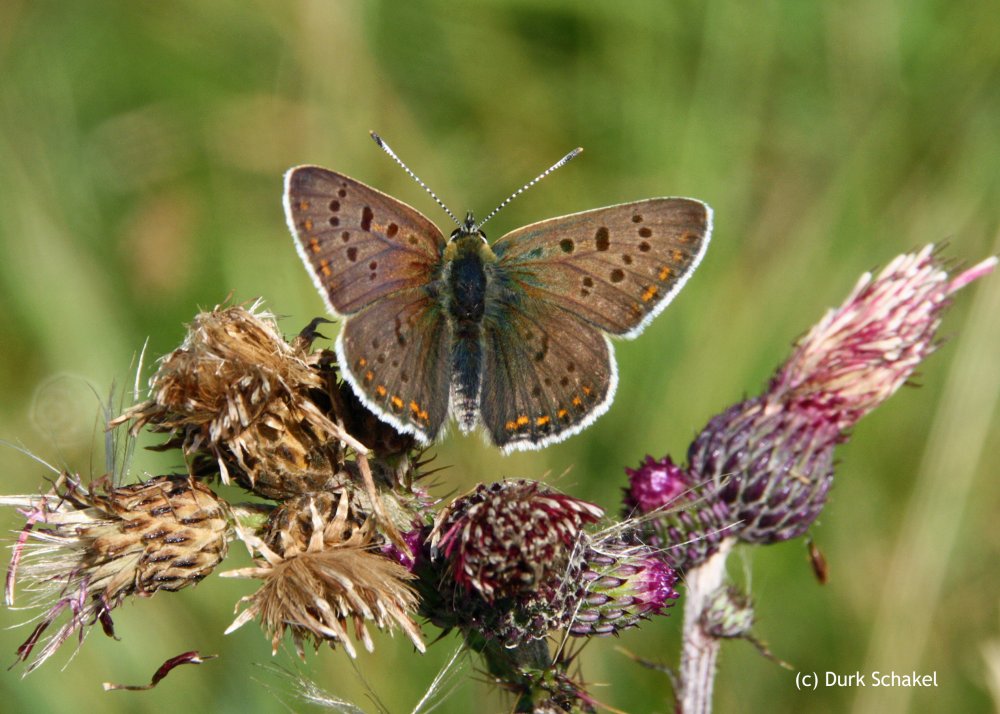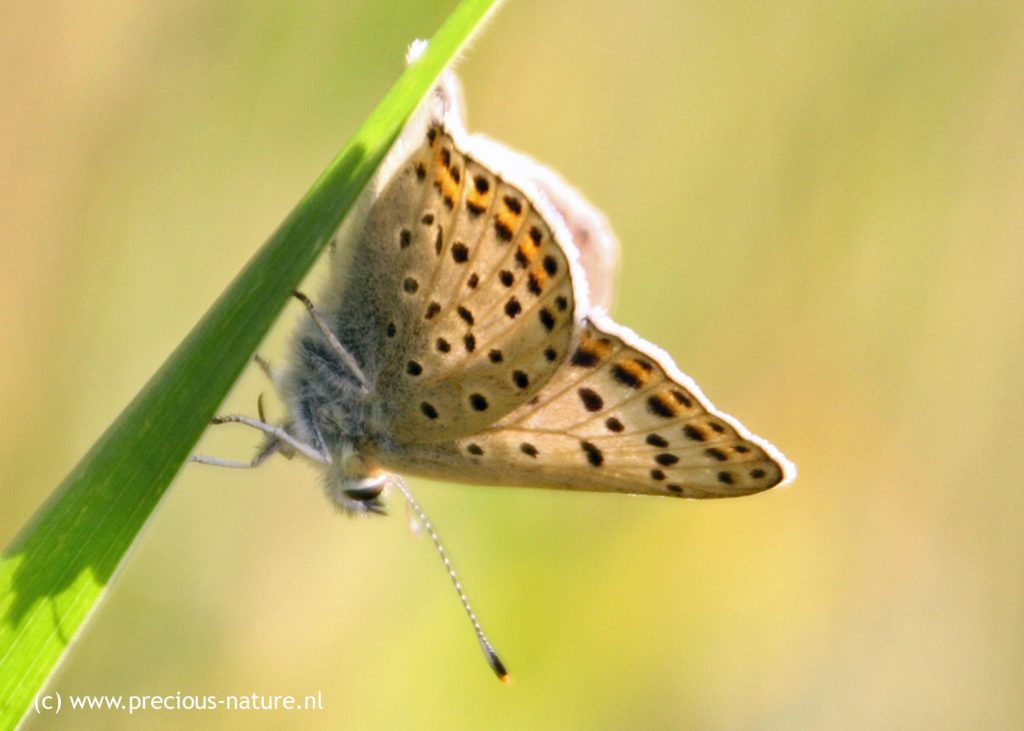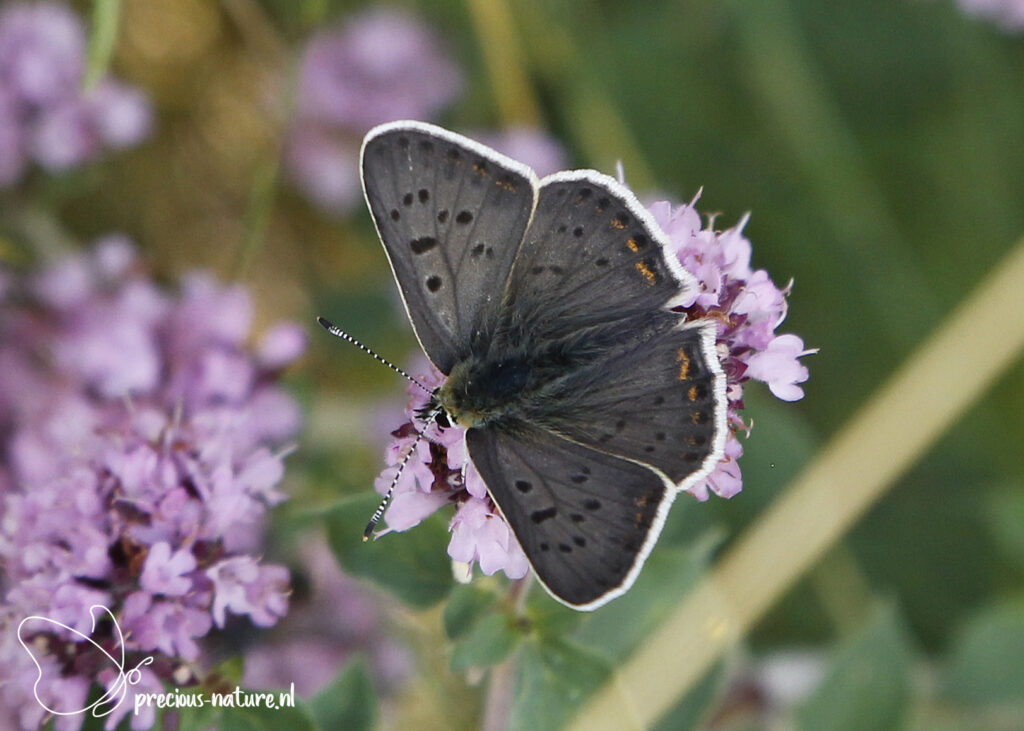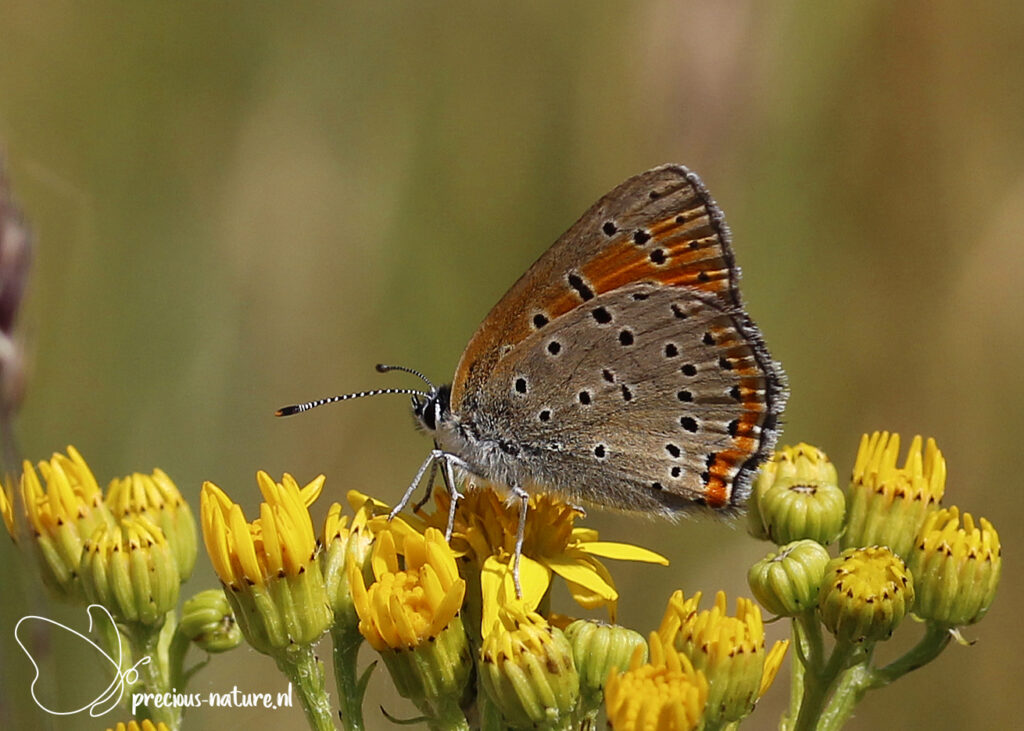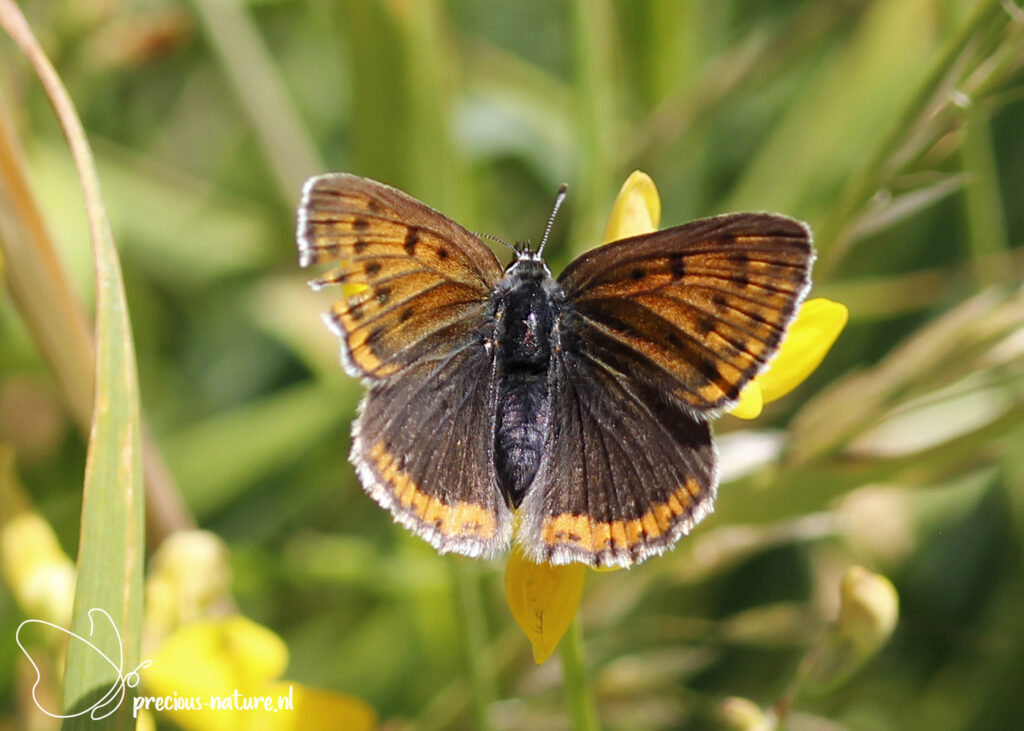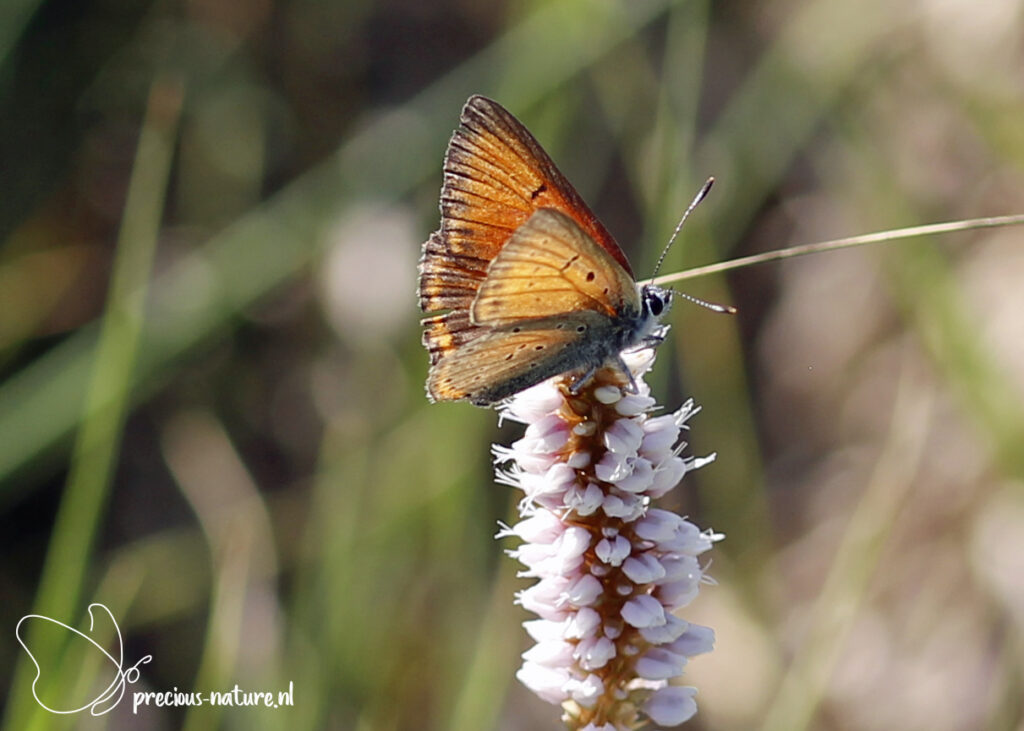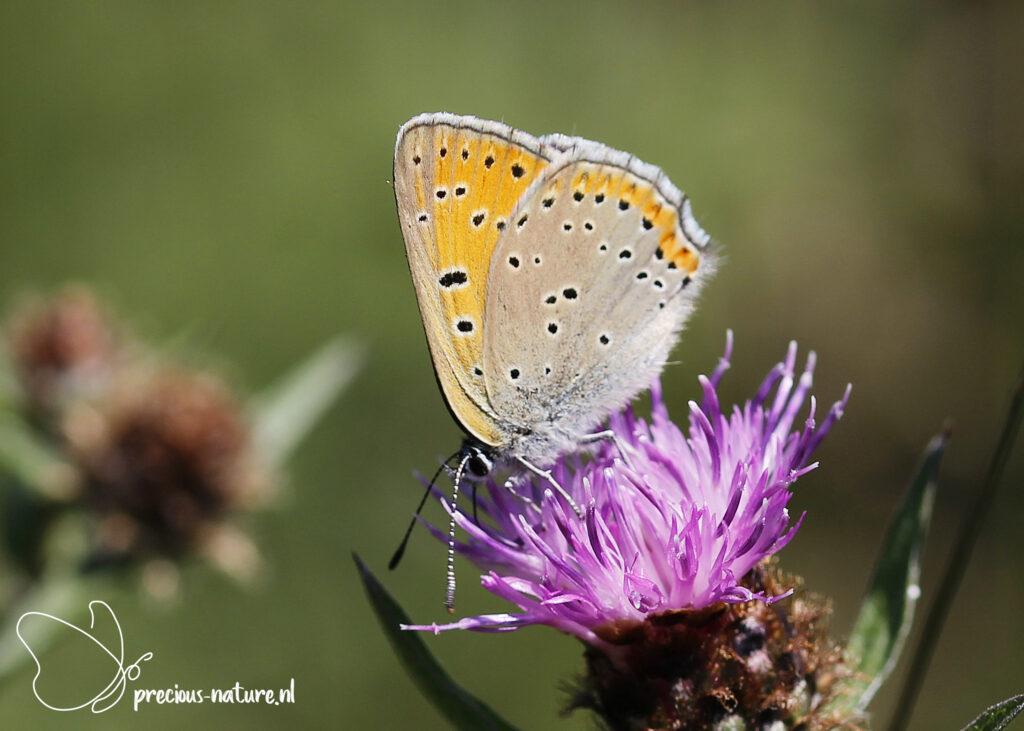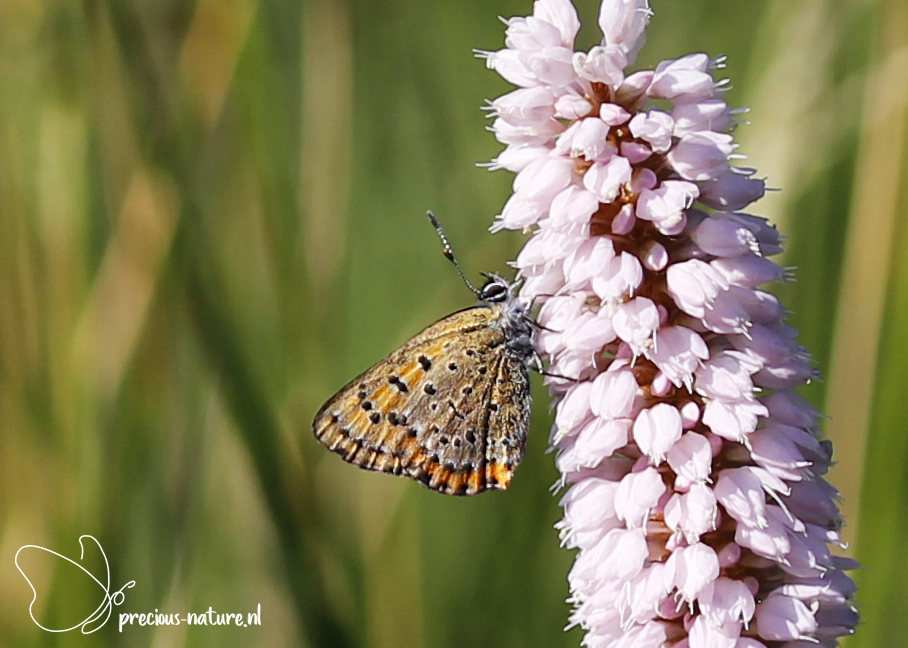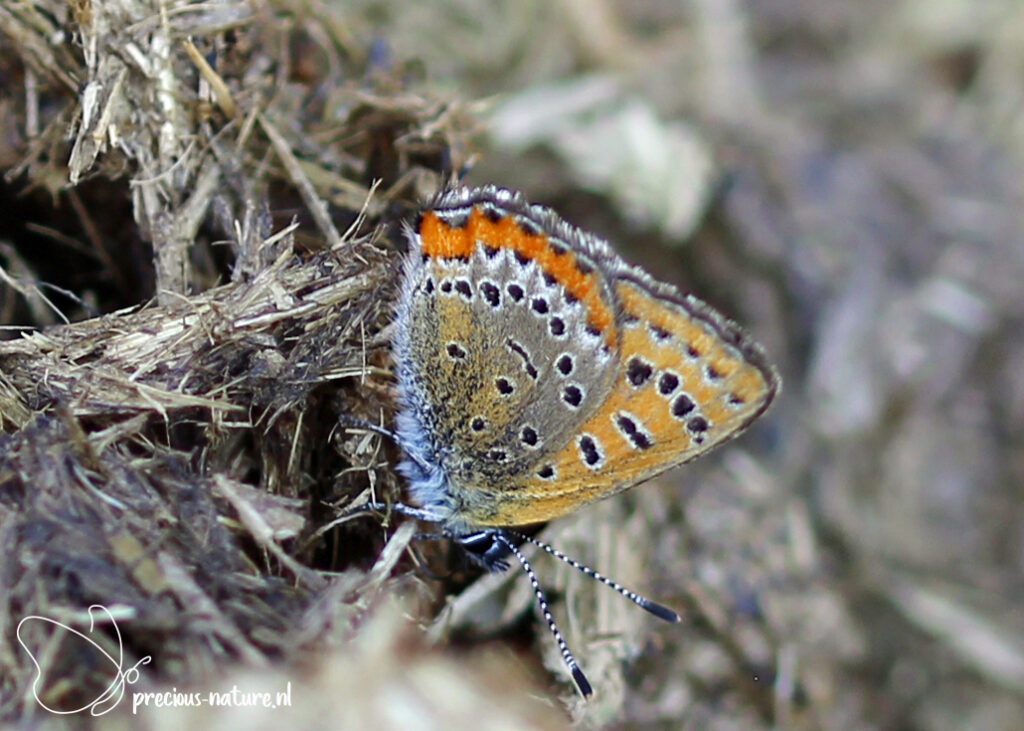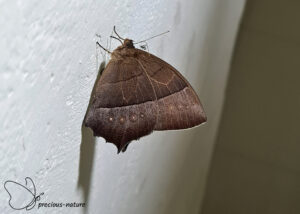For correct determination of Coppers (Lycaeninae), a subfamily of the Gossamer-wing butterflies (Lycaenidae), it is important to pay close attention to the darkness of the wings. This is particularly important in females, which are sometimes difficult to recognize. Butterflies are often fiery red at the top of the wings, and in many species, there is a violet glow present.
Genus: Lycaena
Small Copper – 2016 (NL)
(NCBI-index: 282391)
The Small Copper (Lycaena phlaeas) is a butterfly that flies around in three generations throughout the year, from late April to late June, from late June to early October, and from early September to late October. Males are territorial, often choosing a piece of bare ground or a stone awaiting passing females. They behave aggressively towards any passing insects, returning to the same spot when the chase is over. Identification is fairly straightforward with the top of the hindwing being light grey or dark (summer brood) with an orange-red band in the marginal area. The top of the forewing is orange-red with black dots and a dark termen. The wingspan is 32-35mm. Host plant: Sorrel. Dutch name: Kleine vuurvlinder. Frisian name: Lytse fjoerflinter.
Flying period:

Genus: Lycaena
Sooty Copper – 2017 (NL)
(NCBI-index: 266947)
The Sooty Copper (Lycaena tityrus) is a rare butterfly found in the Netherlands. This butterfly flies around in one or more generations from April to October. The top of the forewing for the male is brown with black spots, the female shows a more orange-yellow pattern. The hindwing is brown with black dots for both. The fringes are intense white. The underside of both wings is grey showing black dots and orange moon spots close to the termen. The female has an orange glow at the bottom of the forewing which is missing from the male. Host plant: Sorrel. Dutch name: Bruine vuurvlinder. Frisian name: Brune fjoerflinter.
Flying period:

Genus: Lycaena
Purple-edged Copper – 2023 (DE)
(NCBI-index: 2.505786)
In the Netherlands, the Purple-edged Copper (Lycaena hippothoe) has not been a resident butterfly since 1946, making it the first extinct species. That is why I traveled separately to Germany to see this species. The upperside of the male’s forewing and hindwing is dark orange with a red-violet sheen. In the female, the upper side of the forewing is dull orange with brown spots. The regular row of submarginal and postdiscal spots is characteristic. The upper side of the hindwing is brown with an orange band along the trailing edge. The spots on the underside of the hindwing are as small as or slightly smaller than those on the forewing, only the hindwing sometimes has an incomplete orange band along the trailing edge. In the male, there is a noticeable purple tinge along the leading edge on the upper side of the forewing as well as on the upper side of the hinding below the midcell. The flight period is in one generation from the beginning of June to the end of July and the wingspan is 34-38mm. Host plant: Sorrel. Dutch name: Rode vuurvlinder. Frisian name: Reade fjoerflinter.
Flying period:

Genus: Lycaena
Violet Copper – 2023 (BE)
(NCBI-index: 2.795559)
A very beautiful but so small butterfly that you can hardly discover it. The Violet Copper (Lycaena helle) is very distinctive and it is almost impossible to confuse it with other coppers. The violet sheen over the orange and black parts on the top of the wings is striking and visible, especially in the male. The female is somewhat larger and strongly marked and the violet sheen is limited or sometimes absent. The submarginal band on the hindwing is bright orange. The underside of the forewing is orange with black spots, with the spots in a row in the outer zone and white on the inside. The underside of the hindwing is brown with a clear orange band in the outer zone that is bordered on the inside by black spots outlined in white. The flight period is in one generation from May to the end of July and the wingspan is 24-26mm. Host plant: Bistort. Dutch name: Blauwe vuurvlinder. Frisian name: Blaue fjoerflinter.
Flying period:


